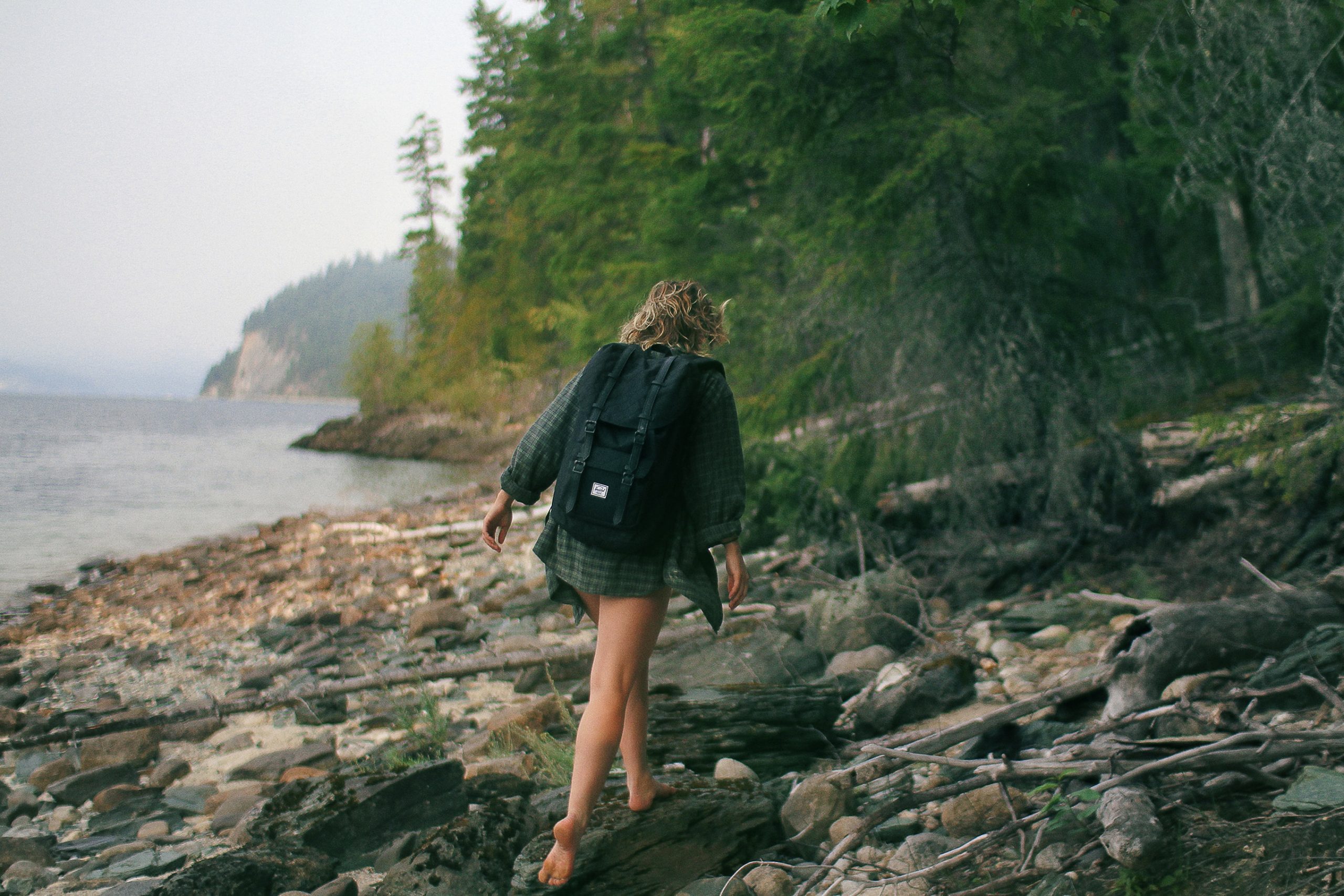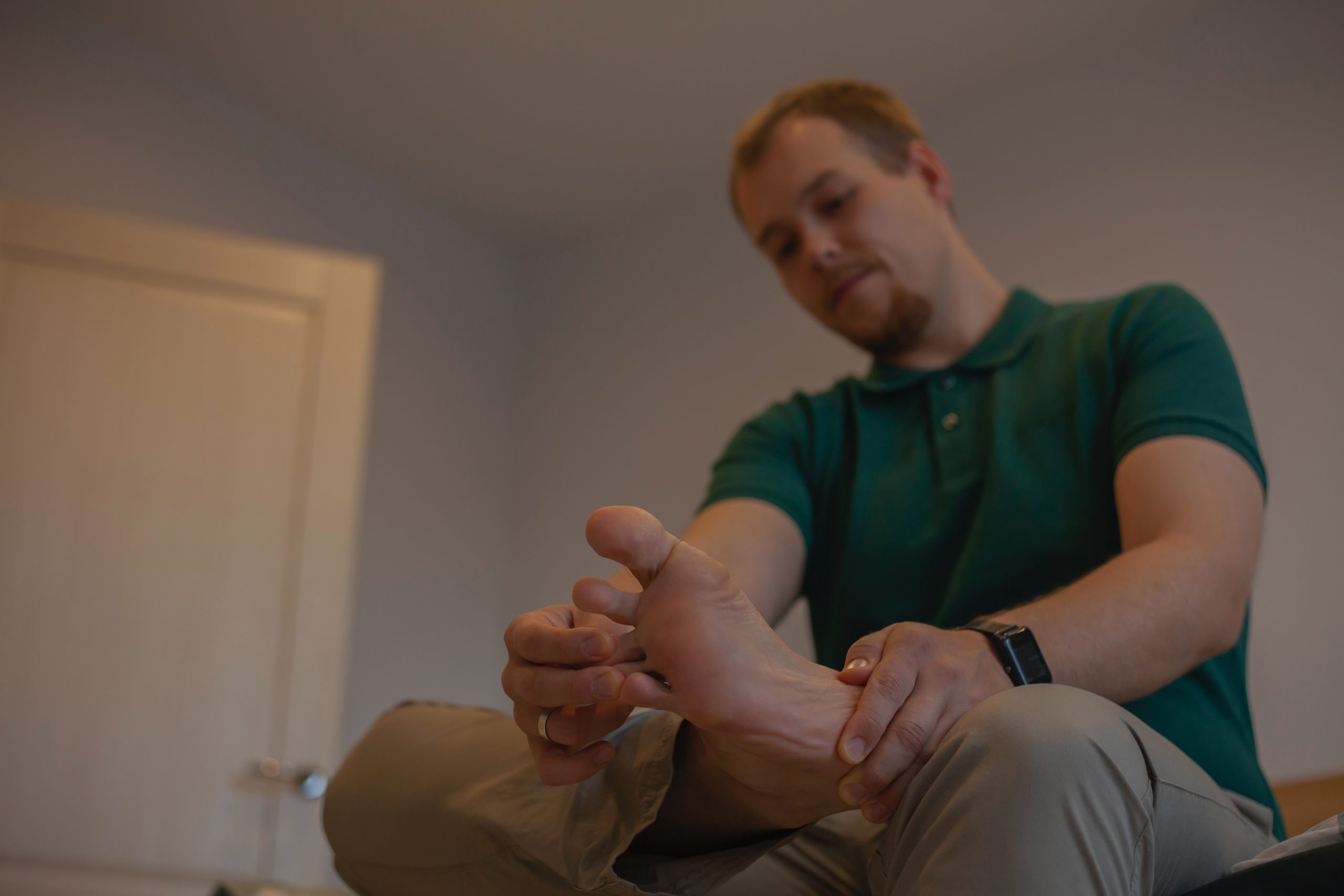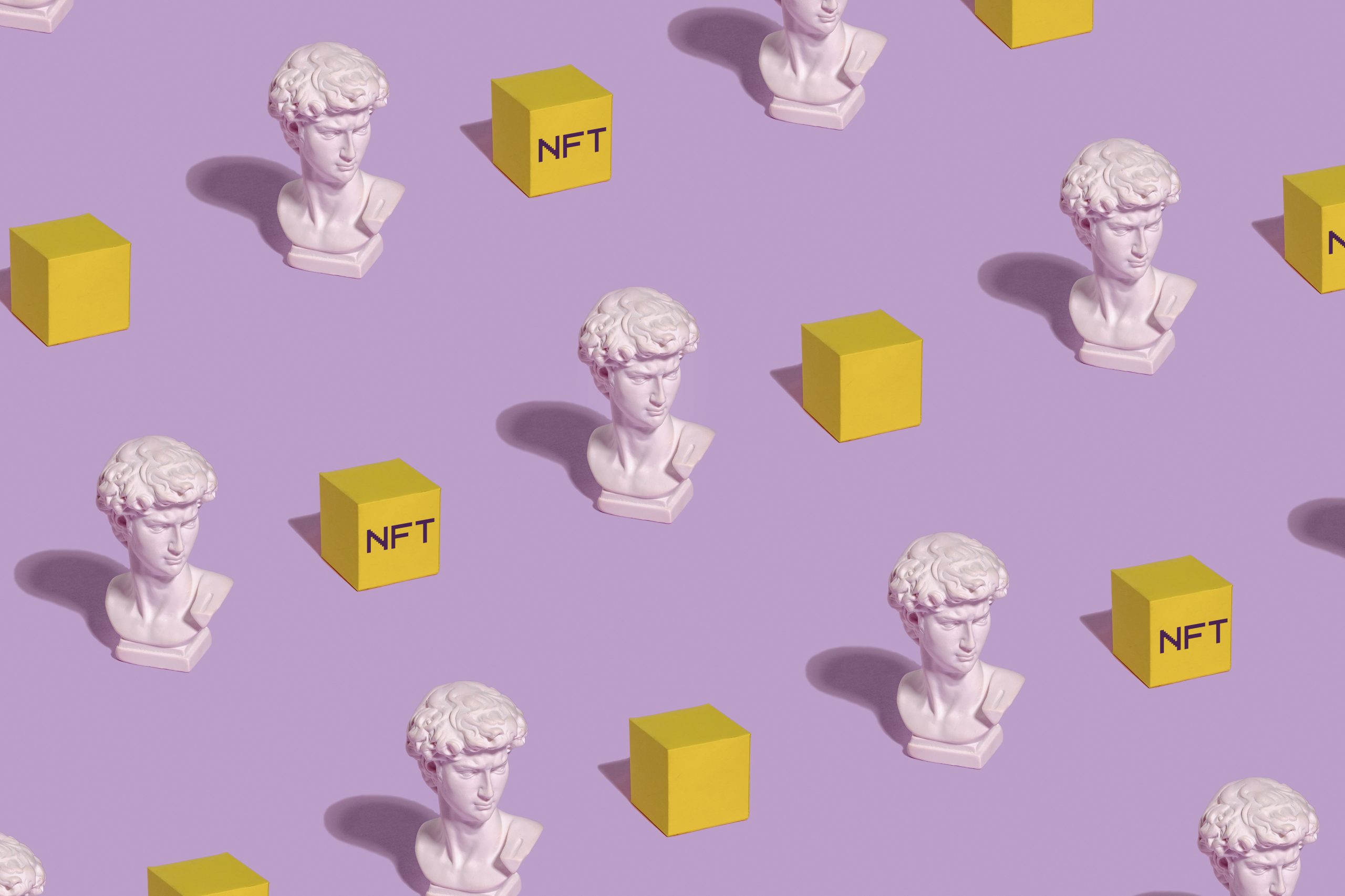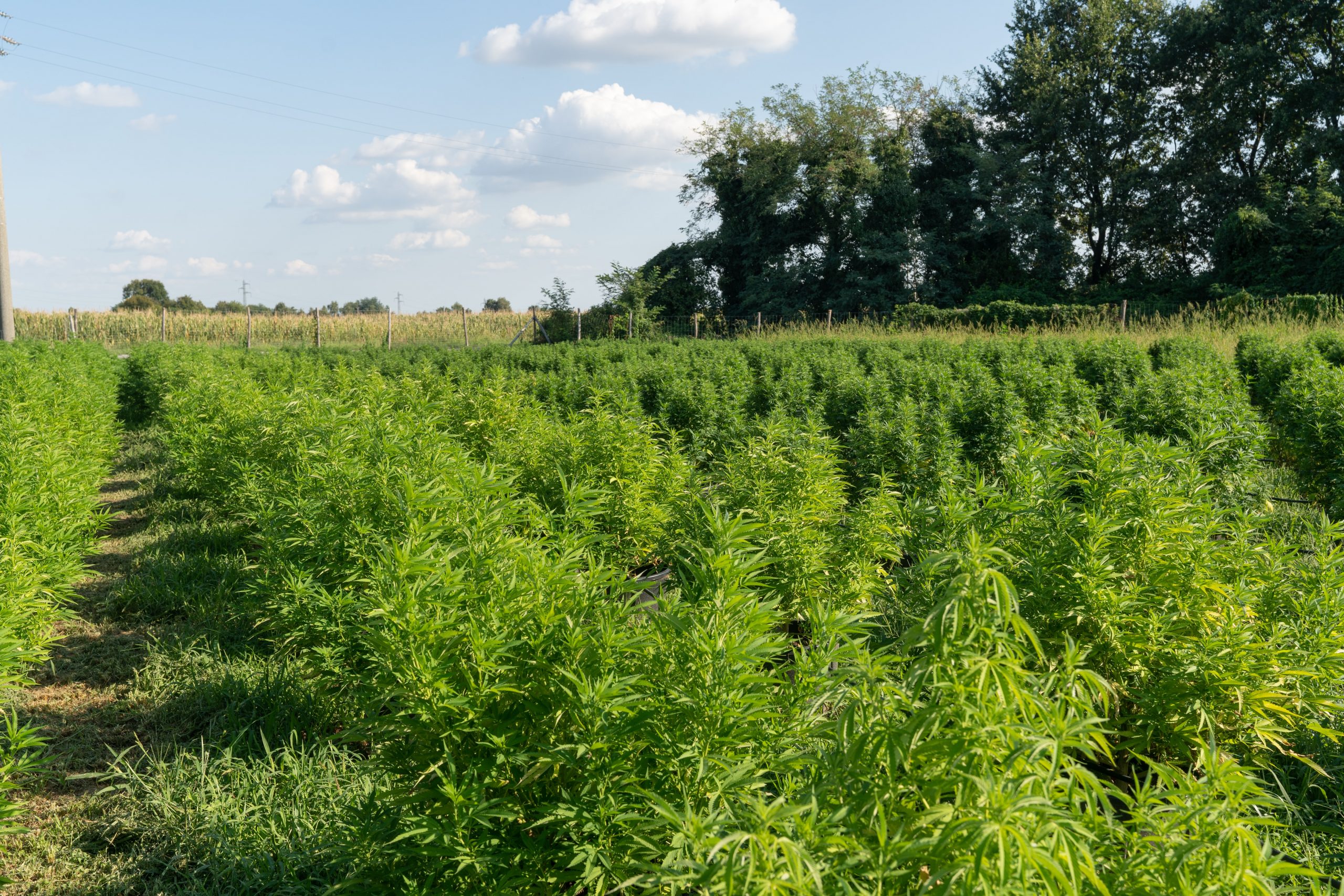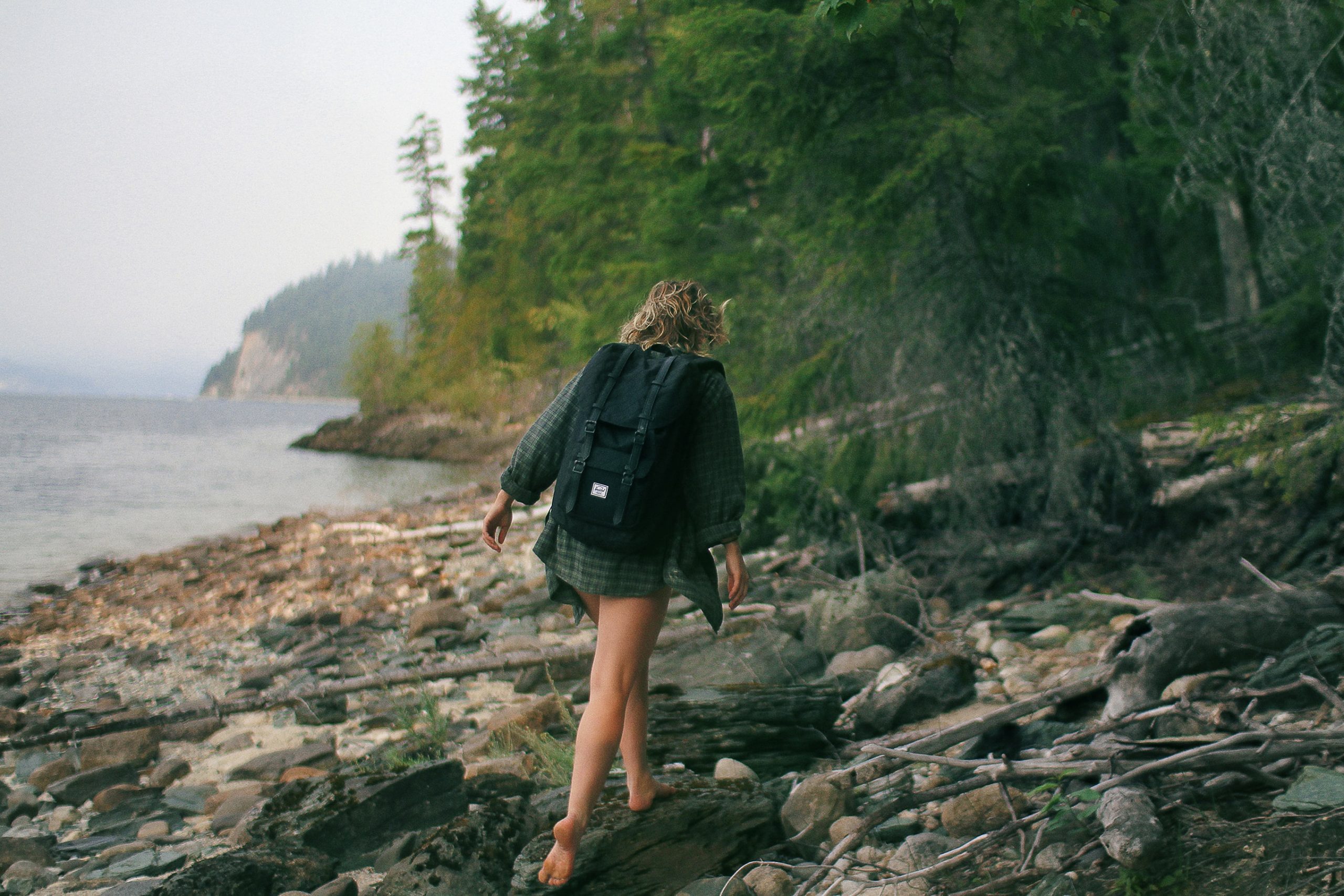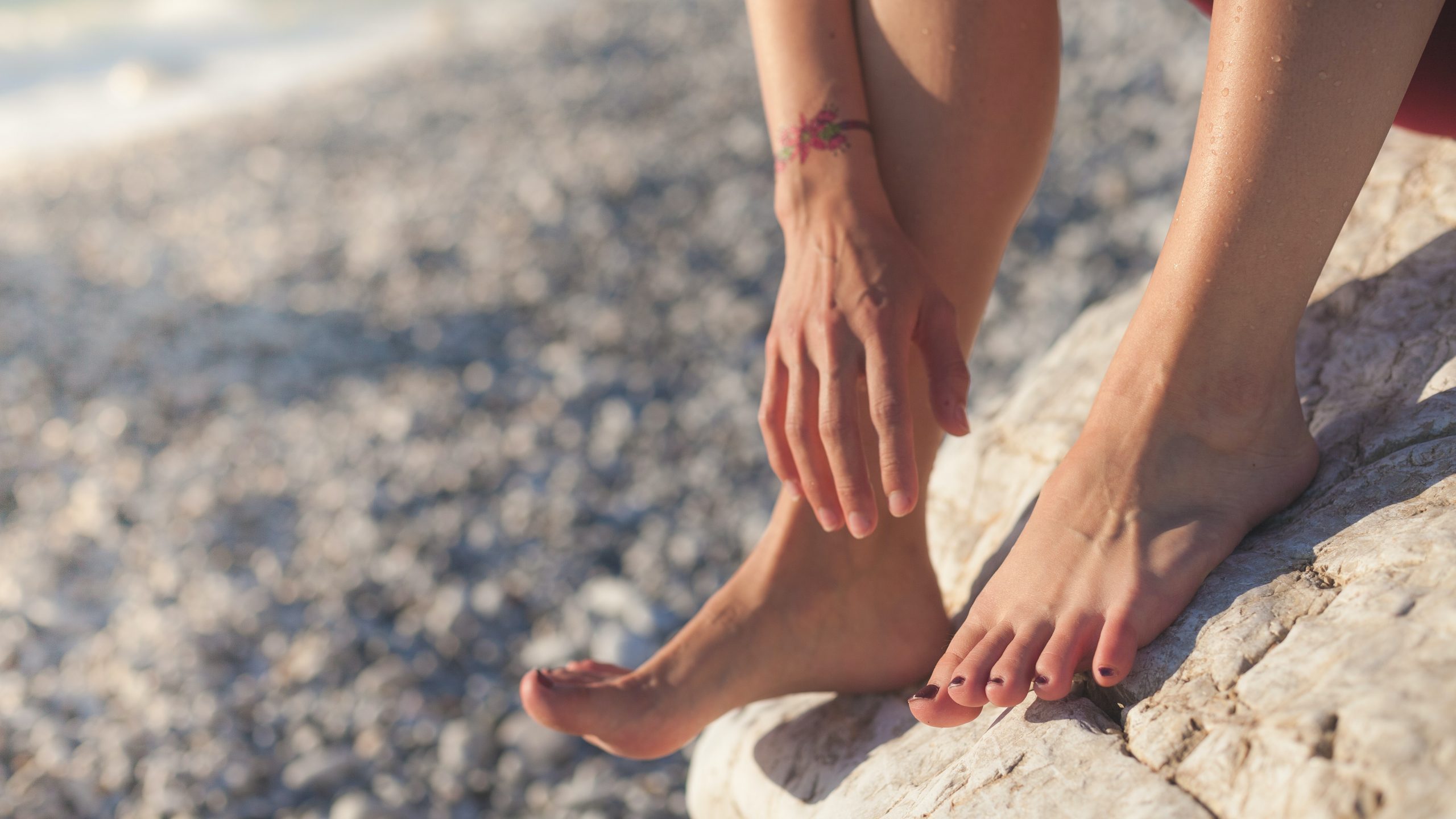For centuries, humans have been walking and running barefoot. It's how we evolved to move, and our feet are designed to perform in this way. However, with the advent of modern footwear, we have strayed away from our natural state, and it's had a significant impact on our feet and overall health.
Enter barefoot shoes. These shoes aim to mimic the feeling of walking barefoot while still providing some protection for the feet. They are designed to be flexible, lightweight, and have minimal cushioning to allow for the most natural foot movement possible.
But what makes barefoot shoes so unique? Let's take a look.

Improved Foot Health
One of the most significant benefits of wearing barefoot shoes is improved foot health. Traditional shoes often have rigid soles and elevated heels that change the way our feet interact with the ground. This can cause muscle imbalances, weaken the arches of our feet, and lead to issues like plantar fasciitis and bunions.
Barefoot shoes, on the other hand, encourage proper foot alignment and allow our feet to move in a more natural way. This can strengthen the muscles in our feet and lower legs and improve our overall foot health.
Better Balance and Stability
Barefoot shoes can also improve our balance and stability. When we walk or run barefoot, our feet have to work harder to stabilize our bodies. This strengthens the muscles in our feet and lower legs, which can improve our balance and reduce the risk of falls and other injuries.
Improved Proprioception
Proprioception is the ability to sense where our bodies are in space. When we wear traditional shoes, our feet are somewhat isolated from the ground, which can diminish our proprioceptive ability. Barefoot shoes, however, allow us to feel the ground beneath our feet and provide more feedback to our brains. This can improve our balance, coordination, and overall body awareness.
Better Running Form
Finally, barefoot shoes can help us run with better form. When we run in traditional shoes, we often land on our heels, which can cause a jarring impact with each stride. Barefoot shoes encourage a forefoot or midfoot strike, which can reduce the impact on our joints and improve our running efficiency.
Conclusion
Barefoot shoes are not just a trendy new shoe option. They offer significant benefits to our overall foot health and can help us move and perform better. If you're interested in trying barefoot shoes, start slowly and gradually increase the amount of time you wear them. It may take some time for your feet to adjust, but the benefits are well worth the effort.
Calzados Descalzos: ¿El Futuro del Calzado?
Durante siglos, los humanos han caminado y corrido descalzos. Es cómo evolucionamos para movernos y nuestros pies están diseñados para funcionar de esta manera. Sin embargo, con la llegada del calzado moderno, nos hemos alejado de nuestro estado natural y esto ha tenido un impacto significativo en nuestros pies y en nuestra salud en general.
Entren en juego los zapatos descalzos. Estos zapatos buscan imitar la sensación de caminar descalzos mientras brindan cierta protección para los pies. Están diseñados para ser flexibles, livianos y tener una amortiguación mínima para permitir el movimiento más natural posible del pie.
Pero, ¿qué hace que los zapatos desnudos sean tan únicos? Echemos un vistazo.

Mejora la Salud del Pie
Uno de los beneficios más significativos de usar zapatos descalzos es la mejora de la salud del pie. Los zapatos tradicionales a menudo tienen suelas rígidas y talones elevados que cambian la forma en que nuestros pies interactúan con el suelo. Esto puede causar desequilibrios musculares, debilitar los arcos de nuestros pies y conducir a problemas como la fascitis plantar y los juanetes.
Los zapatos descalzos, por otro lado, fomentan la alineación adecuada del pie y permiten que nuestros pies se muevan de manera más natural. Esto puede fortalecer los músculos de nuestros pies y piernas inferiores y mejorar nuestra salud general del pie.
Mejor Equilibrio y Estabilidad
Los zapatos descalzos también pueden mejorar nuestro equilibrio y estabilidad. Cuando caminamos o corremos descalzos, nuestros pies tienen que trabajar más para estabilizar nuestros cuerpos. Esto fortalece los músculos de nuestros pies y piernas inferiores, lo que puede mejorar nuestro equilibrio y reducir el riesgo de caídas y otras lesiones.
Mejora de La Propiocepcion
La propiocepción es la capacidad de sentir dónde están nuestros cuerpos en el espacio. Cuando usamos zapatos tradicionales, nuestros pies están algo aislados del suelo, lo que puede disminuir nuestra capacidad propioceptiva. Los zapatos desnudos, sin embargo, nos permiten sentir el suelo debajo de nuestros pies y proporcionar más retroalimentación a nuestros cerebros. Esto puede mejorar nuestro equilibrio, coordinación y conciencia corporal en general.
Mejor Forma de Correr
Finalmente, los zapatos descalzos pueden ayudarnos a correr con mejor forma. Cuando corremos con zapatos tradicionales, a menudo aterrizamos en nuestros talones, lo que puede causar un impacto violento con cada zancada. Los zapatos descalzos fomentan una zancada en la parte media o delantera del pie, lo que puede reducir el impacto en nuestras articulaciones y mejorar nuestra eficiencia de carrera.
Conclusion
Los zapatos descalzos no son solo una nueva opción de calzado de moda. Ofrecen beneficios significativos para nuestra salud general del pie y pueden ayudarnos a movernos y rendir mejor. Si estás interesado en probar los zapatos descalzos, comienza lentamente y aumenta gradualmente la cantidad de tiempo que los usas. Es posible que sus pies tarden un tiempo en adaptarse, pero los beneficios bien valen el esfuerzo.
Calzados Descalzos y Juanetes
Si estás sufriendo de juanetes, usar calzados descalzos puede ser la respuesta a tus problemas de pies. Los juanetes son una afección común y dolorosa en la que la articulación del dedo gordo se hincha y desalineada.
Usar zapatos con demasiado acolchado puede empeorar este problema, así como los 'high heels' o los calzados ajustados. Por eso, muchas personas con juanetes optan por los calzados descalzos, que ofrecen un montón de espacio para que los dedos se muevan naturalmente, mientras que todavía proporcionan una adecuada protección contra superficies duras como el pavimento y el hormigón.
Los calzados descalzos ofrecen una serie de beneficios cuando se trata de controlar los juanetes. En primer lugar, ayudan a promover el movimiento natural del pie al permitir que los dedos se extiendan sin restricciones, lo que reduce la presión en la zona del juanete y proporciona alivio del dolor asociado con la condición. Además, ya que la mayoría de los calzados descalzos no tienen soporte para la arco, no interfieren con ninguna ortopedia que pueda necesitar usar. Finalmente, este tipo de calzado suele ser bastante ligero, por lo que no coloca una carga extra en las articulaciones ya dolorosas de sus pies causadas por los juanetes.
En pocas palabras, si tienes juanetes, entonces invertir en unos calzados descalzos de buena calidad podría marcar la diferencia cuando se trata de controlar el nivel de dolor durante el día. Estos tipos de zapatos no solo ofrecen una superior comodidad, sino que también fomentan los movimientos saludables de los pies que ayudarán a mantener esos molestos problemas de los juanetes a lejos.
Barefoot Shoes and Bunions
If you’re suffering from bunions, wearing barefoot shoes may be the answer to your foot woes. Bunions are a common and painful condition in which the big toe joint becomes swollen and misaligned.
Wearing shoes that have too much cushioning can make this problem worse, as can high heels or tight-fitting footwear. That's why many people with bunions opt for barefoot shoes—they offer plenty of room for your toes to move naturally while still providing adequate protection against hard surfaces like pavement and concrete.
Barefoot shoes provide a number of benefits when it comes to managing bunions. First, they help promote natural foot movement by allowing your toes to spread out without restriction—this helps reduce pressure on the bunion area and provides relief from pain associated with the condition. Additionally, because there’s no arch support built into most barefoot shoes, they won't interfere with any orthotics you may need to wear. Finally, these types of footwear tend not to be very heavy so they won't place extra strain on already sore joints in your feet caused by bunions either.
In short, if you have bunions then investing in some quality barefoot shoes could make all difference when it comes to managing pain levels throughout the day. Not only do these types of shoe provide superior comfort but also encourage healthy foot movements that will help keep those pesky bunion problems at bay!
What exactly is an NFT?
NFT’s have gotten a lot of hype lately. But what exactly is an NFT? Let’s break it down.

NFT stands for “Non-fungible Token.” This can be considered a digital asset.
The word “fungible” means something that can be traded for something else of equal value. So, in this case “non-fungible” means that there is not something with equal value. There is only one uniquely like it. Many of the world’s most valuable items such as the Mona Lisa or the Statue of David are considered “non-fungible.” There is only one.
When we look on the other hand, for example, we have cryptocurrencies, such as Bitcoin, which are “fungible” tokens, meaning each Bitcoin has the same value, therefore one Bitcoin can easily be traded with another Bitcoin. When you have an NFT, it can be bought and sold but there is nothing that is of equivalent value that could easily be traded with it.
Then we have the word “token.” Being a token means it is unique and there is nothing like it. When something is tokenized that means it’s attached to a digital certificate of ownership, and is uniquely its own thing.
What is the blockchain?
In order to better understand how NFT’s work, it is important to have an understanding of the blockchain as well.
A blockchain is a database that stores digital information chronologically. This is decentralized which means the control is spread out across different authorities instead of by one. This allows people to make transactions directly with each other instead of relying on a middleman such as a bank. Every transaction you make on the blockchain goes onto a public ledger so there is proof of whatever exchanges were made.
So, when you buy your NFT, you won’t have a physical asset proving ownership, but the proof of your ownership is recorded on the blockchain.
So why would you want an NFT anyway?
Just like any other collectible, your NFT might raise in value the longer you hold onto it. That means one day, you could potentially sell it and make money.
The other thing that NFTs sometimes have are “utilities.” These are special “real world” perks that come with your NFT. This could be access to events, discounts, special communities, etc. As a holder of that particular NFT, you have access to its utilities. You may not care about the digital asset itself, but you may want to hear your favorite media icon speak at a conference. It could give you that special opportunity.
Whatever your motive is, it’s definitely worth it to take advantage of this new form of collectibles.
5 Facts about Fall
With the beautiful colors, cozy feelings, and awesome flavors, Fall is a crowd favorite. Whether you're planning your next trip to the pumpkin patch, organizing your Halloween costume, or gearing up for Thanksgiving, there is something for everyone! To help you become even more of a Fall expert, let us fill you in on some facts about Fall that you might not have known before.
1. "Pumpkin spice" flavor doesn't actually contain pumpkin.
Companies that produce edible items (lattes, cookies, doughnuts, etc.) that are pumpkin spice flavored very rarely use pumpkin in their recipes. This flavor consists of a spice blend usually including nutmeg, cinnamon, dry ginger, and cloves. Often the products also contain a synthetic version containing chemicals. These chemicals make your brain think that the flavor is pumpkin. A sad twist on our fall favorites! Luckily there are a lot of 'copycat' recipes that actually include real pumpkin and real ingredients. You can recreate some of your favorites at home with less chemicals.
2. Fall means tourism!
There are many destinations that have spectacular fall leaves, attracting dozens of tourists each year. People travel from all over to see the colors and collect some great photos. It's no beach, but the beauty appeals to travelers, and towns that have beautiful fall colors rake in a lot of money due to tourism in this season.
3. The Fall leaves colors exist all year.
The reason we can't see the colors is because there is chorophyll blocking our vision from them, and when the time comes, the chorophyll actually fades, exposing the beautiful reds, oranges, and yellows we all know and love. The chorophyll fades because of changes in the length of daylight and changes in temperature, (the leaves stop their food-making process). So it's not that the leaves change their color, it's that the chorophyll disappears.
4. Fall isn't caused by the earth's distance from the sun.
The distance from the sun doesn't affect seasons at all. What affects the seasons is actually the earth's tilt relation to the sun. It gets warmer in each hemisphere when the earth tilts towards the sun and colder when it tilts away.
5. Fall is a specifically American term.
In the 1600s poets coined the phrase "fall of leaves." This was later shortened to just "fall." While Autumn was the popular word in Britain, the American colonies and the English did not keep in good communication with one another and so changes between the languages started to occur. By the 1800s the word "fall" had made its firm roots in the American English language.

Now, (after fighting about whether or not candy corn is a delicious sugary sweet or a disgusting and overrated fall favorite) you have some talking points for your next Fall party. Or should we say your next Fall of Leaves party?
6 Ways Hemp can Impact the Planet
Hemp is one of the most versatile and oldest crops in the world. There are many ways it can impact the planet that you might not have even thought of yet. Here are 6 ways that hemp could be the differentiator we’ve been looking for.
#1) Hemp can produce renewable biofuel
A 2010 study at UCONN found that hemp converts to biodiesel at a 97 percent efficiency rate, and burns at a lower temperature than any other type of biofuel on the market.
“The plant’s ability to grow in infertile soils also reduces the need to grow it on primary croplands, which can then be reserved for growing food. For sustainable fuels, often it comes down to a question of food versus fuel,” says Richard Parnas, who led the study, noting that major current biodiesel plants include food crops such as soybeans, olives, peanuts, and rapeseed. “It’s equally important to make fuel from plants that are not food, but also won’t need the high-quality land.”
Because there is already a hemp industry, this non-toxic fuel source can be created with little additional investment, and is an option that can be domestically produced and totally renewable.
Plus, when burned in a diesel engine, hemp eradicates the exhaust odor of petroleum with the pleasant smell of hemp. Renewable and smells great? Count us in!
#2) Growing hemp prevents pesticide pollution
Hemp is naturally resistant to pests, and therefore does not require pesticides or herbicides like other crops. In turn, increasing our use of hemp will help to decrease the use of pesticides.
When used on land, pesticides seep into water sources contaminating the water and harming living creatures within that water, negatively impacting the ecosystem.
This also impacts those drinking the water, and pesticides have been linked to many health issues such as birth defects, reproductive dysfunction, diabetes, Parkinson’s, Alzheimer’s disease, and several types of cancer.
By choosing hemp, we can significantly reduce the exposure to unnecessary toxins and pollutants for ourselves and the world we live in.
#3) Hemp helps to restore soil fertility
Hemp grows in many different types of soils and terrains. Its deep roots help to hold the soil together which, in turn, prevents soil erosion.
Hemp also increases the microbial content of the soil, and the roots give nitrogen and other nutrients to it. After the harvest, this soil makes excellent compost amendments for other plants, and hemp cultivation can follow the rotation of agriculture with wheat or soybean. In fact, the same soil can be used to grow hemp for many years, without losing its high quality.
This ability to rotate crops helps to support sustainable agriculture.
#4) Growing hemp prevents soil compaction and erosion
Did you know soil compaction and erosion are some of the biggest problems facing farmers today?
This is especially true for farmers within the Midwest who often depend on two staple crops – soybeans and corn.
Corn contains a deep and fibrous root system that penetrates the ground deep below the surface. Over time, these roots can lead to soil compaction during the winter and spring. Soybeans also have a strong root system but do not penetrate below the topsoil. As a result, soil erosion can frequently occur. However, hemp is capable of repairing damaged soils. In fact, introducing hemp into crop rotations not only adds diversity but can also reverse the effects of soil compaction and erosion. Hemp contains deep roots that can reach up to nine feet below the surface. These hearty roots help to break up soil compaction while also increasing nutrient absorption
#5) The hemp plant absorbs toxic metals
Hemp is very efficient at pulling heavy metals from soil. It’s what helps it grow so abundantly and quickly. Trees take decades to harvest, whereas hemp only takes months.
Because of hemp’s ability to pull metals from the soil, it can be used very effectively to clean up areas that are contaminated.
Hemp is so effective at absorbing toxic materials it has even been considered for removing radiation from Fukushima.
#6) Hemp can produce biodegradable plastics
Americans purchase approximately 42.6 billion individual 1-liter bottles of water each year. A number even further illuminated with the knowledge that plastic water bottles can take anywhere between 400 and 1,000 years to decompose.
The basic building blocks of plastics are cellulose derived from petroleum. Yet petroleum is highly toxic. Hemp on the other hand happens to be the greatest cellulose producer on earth. It also happens to be biodegradable.
Hemp also produces a very strong material. Henry Ford used hemp-and-sisal cellulose plastic to build car doors and fenders in 1941. On video Henry Ford demonstrated that his hemp cars were more resistant to blows from a sledgehammer than steel-bodied cars were.
Why not choose this strong, non-toxic, and biodegradable hemp option for producing plastics?

These are just 6 of many ways that hemp is good for the environment. Hemp is often misunderstood because of its history of being banned. Maybe you haven’t thought of hemp before, for example, in terms of soil quality, or pesticide use. With many countries legalizing even the psychoactive part of the cannabis plant, it’s important for us to take this opportunity and have a close look at how making some adjustments and utilizing hemp more can have a positive impact on the Earth we live in.
Even though we usually think of walking as a leisurely activity, or don’t equate it to having a serious impact on our quality of life- time and time again research tells us that the simple act of walking for exercise proves to have some incredible health benefits.
Walking for your body:
Maybe you wish you could take up running but your joints just don’t allow for it. That’s okay! Studies show that walking at a moderate pace, and running at an intense pace have very similar reductions in risk for high blood pressure, high cholesterol, heart disease, and diabetes. Your health improves in the same ways by spending your time walking instead.
The British Journal of Sports Medicine conducted a study that showed that people who stuck to a walking program showed great improvement in blood pressure, slowing of resting heart rate, reduction of body fat, reduced cholesterol, improved depression scores, and increased measures of endurance.
Walking for your mind:
Walking not only impacts physical health, but also improves our mental health as well. One study found that in as little as 12 minutes, walking impacted our self confidence, vigor and attentiveness. Compared to 12 minutes of sitting, mental health improves greatly with this simple act. If you want to even further the benefits, experts say walking in nature will decrease levels of depression and help you to not ruminate over negative thoughts.
If you’re dealing with anxiety, studies show that as little as 10 minutes of walking can be just as good as a 45 minute work out at reducing your anxiety levels, and improving your mood. A small price to pay for a big return.
If you are a business owner, a student, or a creative person in general, you might like to learn that one Standford University study found that walking increased creative output by an average of 60 percent. They labeled this “divergent thinking,” which is the thought process used to generate creative ideas by exploring many possibilities. According to this study, “walking opens up the free flow of ideas, and it is a simple and robust solution to the goals of increasing creativity.” Again, a small price to pay for a big return!

Overall, you shouldn’t sleep on this simple form of exercise. Whether you want to improve your heart health, your mood, or have some work/life epiphanies, this is for you! As a small time commitment that has huge benefits, walking is perfect for anyone and can be done virtually anywhere.
Making the Switch to Barefoot Shoes
You’ve been thinking about it for a while, and now you’re ready to take the plunge! Congratulations on making a choice that will have a positive impact on your life and health. Now that you’re ready, you might be wondering, how can I switch shoe types gracefully? This is a great question, and although you might be excited about your new shoes, we suggest that you don’t quit your old shoes cold turkey. Logging many miles on your barefoot shoes right off the bat will leave you feeling sore and uncertain of your new upgrade. Easing into it is the best approach. Let us explain why.
Your lower legs, ankles, and feet have become lazy
Yes, you read that right. After years (probably your whole life) of shoes that offer great amounts of cushion and shock absorption, your muscles have not had to move in the ways they were designed to in a long time. This has made them less flexible and slightly weaker. Because of this, if you start wearing your new barefoot shoes everywhere, you’re not giving your feet time to build this muscle. To avoid pain or injury in the beginning, starting slow is best.
Your gait has become accustomed to the shoes that you are currently using
Your gait includes your posture, your stride, and overall how you move about in the world. Switching shoes means that this will change. Just like how you are going to give your feet, ankles and lower legs time to adjust and build up muscle, you might also be using different muscles more when your gait changes that need time to build themselves up as well. Again, making the switch slowly will give your body time to strengthen where it needs to, preventing pain and possible injury.
So now you understand why you should start slowly. But how should you execute this masterful switch? That is a great question, and we can help you with an actionable plan.
How do I make the switch?
We suggest that you start by wearing your shoes around the house. This will give your feet something familiar to land on that they might even be used to walking barefoot on already. Next, start going for short walks outside, slowly increasing to longer walks. When you feel comfortable with this, you can start going for jogs, and so on. This process will be true for any style of shoe you’re starting with, whether it’s a sandal, a casual wear shoe, or a running shoe. Start out small, and work your way up to wherever you want to land.
4 Reasons to Try Barefoot Shoes
Have you been thinking of giving minimal shoes a try? This movement (pun intended) of going back to our feet in natural form and letting them do their thing, has been catching on over the past 10 years. Shoes that offer a lot of padding, shock absorption, and shape are actually attempting to correct something that isn’t wrong! Your feet were made to carry you, and trying to change the way they are designed can cause permanent damage to not only your feet, but also your back, legs, and joints.
If you’re not yet convinced, here are some reasons why you should try minimal shoes that you may not have thought of yet.
1. You land more gently
When we wear shoes that have a lot of padding, we might be placing a lot of impact on one part of our foot, but our feet don’t signal to our brain as quickly that we need to land more softly. When we wear minimal shoes and our feet can feel the impact, we can understand where we might be having a greater impact than necessary as we run or walk. This allows us to efficiently adjust our stride to fix where we are hitting hard! So instead of striking our heel for an hour during our run, we can feel within minutes that we are striking our heel, and can fix this immediately.
2. It can strengthen your lower legs and feet
Wearing minimal shoes has been shown to increase plantar flexor strength. These are the muscles in your lower leg, ankle, and foot that help to control foot movement. Many endurance athletes focus on building strength here, so making the switch to minimal shoes can help this without the extra training.
3. Your balance can improve
As you hike, train, or generally move through life, your feet pass information to your brain about what you’re walking on! With a great amount of cushion below your feet, you can’t feel what’s underneath them. With a minimal shoe, you can feel this, allowing your feet to send those signals to the brain and, in turn, you can move more skillfully, while also improving your natural balance.
4. More comfort
With the wide toe, your feet have room to spread out and your toes aren’t pinched all day. You’ll get home after a long day and you won’t feel the need to kick off your shoes immediately when you walk through the door. What’s a better win than that?

